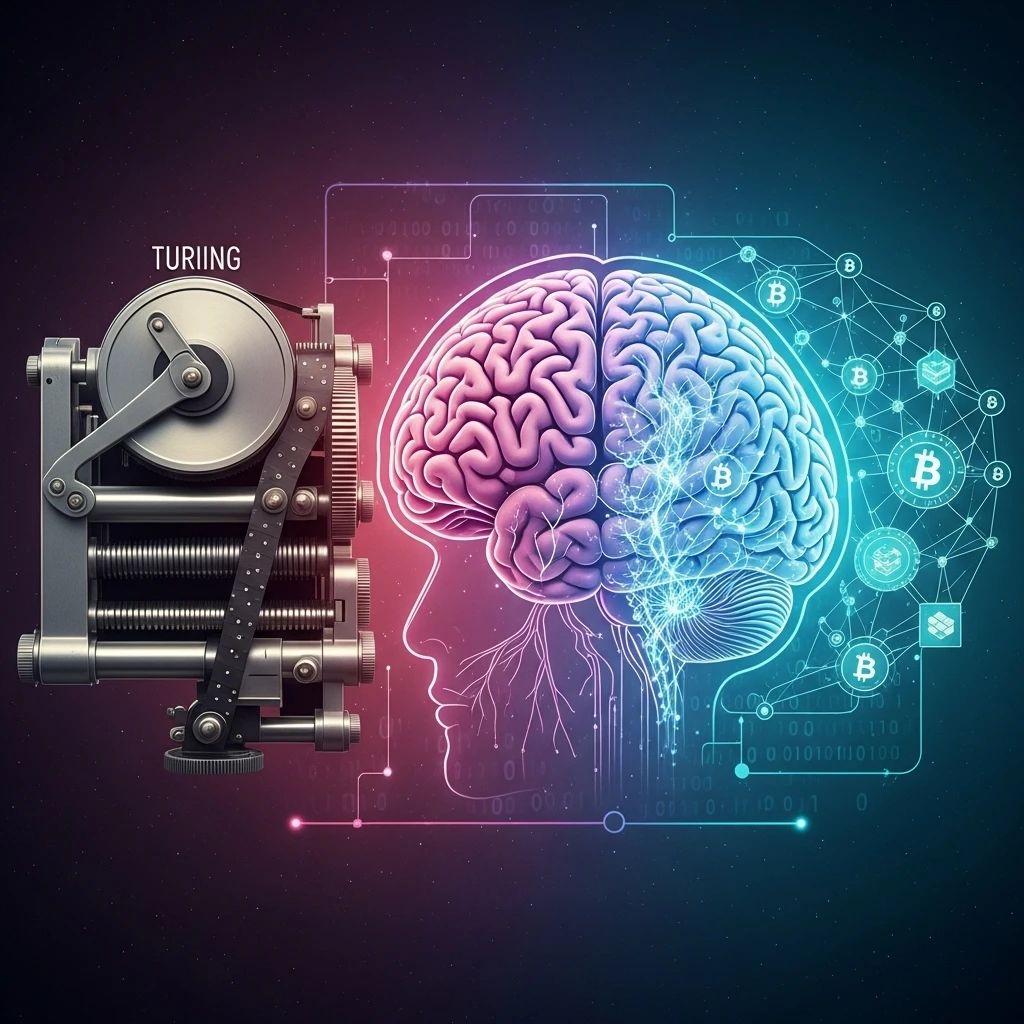True human intelligence lies in the ability to make judgments beyond the boundaries of formal systems.— Inscribed on the cover of Thinking, Fast and Slow
I. Turing and Kahneman: Two Models of Thought
In Thinking, Fast and Slow, Daniel Kahneman clearly divides human thinking into two systems:
- System 1: Fast Thinking — Intuition, analogy, automation, irreducible
- System 2: Slow Thinking — Reasoning, analysis, formal computation, reducible
But as early as the first half of the 20th century, Turing had already mathematically modeled these two modes of thinking through two groundbreaking papers:
- In his 1936 paper On Computable Numbers, with an Application to the Entscheidungsproblem, Turing abstracted a fully formalized, reducible, and linearly recursive computational model — the Turing Machine. This corresponds precisely to Kahneman’s “slow thinking”: deliberate, logical, and reproducible processes.
- In his later work Systems of Logic Based on Ordinals, Turing went a step further, attempting to address judgments that formal systems themselves cannot resolve. To do so, he introduced a “computation agent aided by intuition” — the Oracle Machine. This was a type of judgment that could not be simulated by a Turing Machine: informal, non-recursive, and able to cross the boundaries of undecidability. This is essentially Kahneman’s “fast thinking”: intuitive, analogical, and heuristic cognition.
II. The Oracle Machine Problem: Existence and Stability
Turing’s insight was profound. He realized that the Oracle Machine is not a reducible object. Unlike the Turing Machine, it cannot be formally modeled, nor can a “universal oracle machine” be constructed.
In other words, introducing intuitive judgment into a formal system faces two fundamental challenges:
- Does the oracle exist? — How can “outside-the-system” judgment be expressed within a system?
- Is the oracle stable? — If the system continually invokes the oracle, is this “source of intuition” sustainable, or will it collapse through iterations?
Turing proposed a solution: transfinite recursion. This is a “recursive escalation mechanism” to simulate the effect of an oracle — each round of judgment relies on the result of the previous round, and this process can extend into ordinal infinities. Through this, Turing aimed to ensure the constructive existence of the oracle system.
III. Bitcoin: A “Real Intelligent Agent” in Irreversible Time
Satoshi Nakamoto completed the final step that Turing left unfinished:
- Turing’s Oracle Machine remained an abstract possibility, lacking real-world stability.
- Satoshi introduced irreversibility of time within dissipative structures. Through Proof-of-Work, he embedded the entropy-increasing process of the physical world into the system, thereby constructing a real-world oracle judgment system.
The Bitcoin system combines:
- Turing Machine: Script execution, transaction verification — formally computable
- Oracle Machine: Block selection, double-spend resolution — intuitive judgment
- Transfinite structure + irreversible time: Hash collisions, mining competition, entropy dissipation — ensuring stability and existence
In this sense:
Turing Machine = Human slow thinking
Oracle Machine + Irreversible Time = Human fast thinking
IV. The Origin of Intelligence: Awakening of Naturalness in Artificial Systems
Thus, we can summarize:
- On Computable Numbers established human mastery over formal intelligence — this laid the foundation of the computer age.
- Systems of Logic Based on Ordinals revealed judgment beyond formality — the intuition and creativity we are familiar with.
- The Bitcoin system is the first real-world unification of all three:
- → Formal processing of transactional logic
- → Intuitive resolution of undecidable problems
- → Stabilized within irreversible physical time
This is not merely a breakthrough in financial technology. It is the first time humanity has truly simulated the structure of natural intelligence within a man-made system.
Bitcoin may be our first step toward real intelligence.
